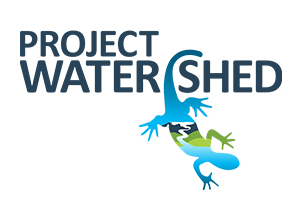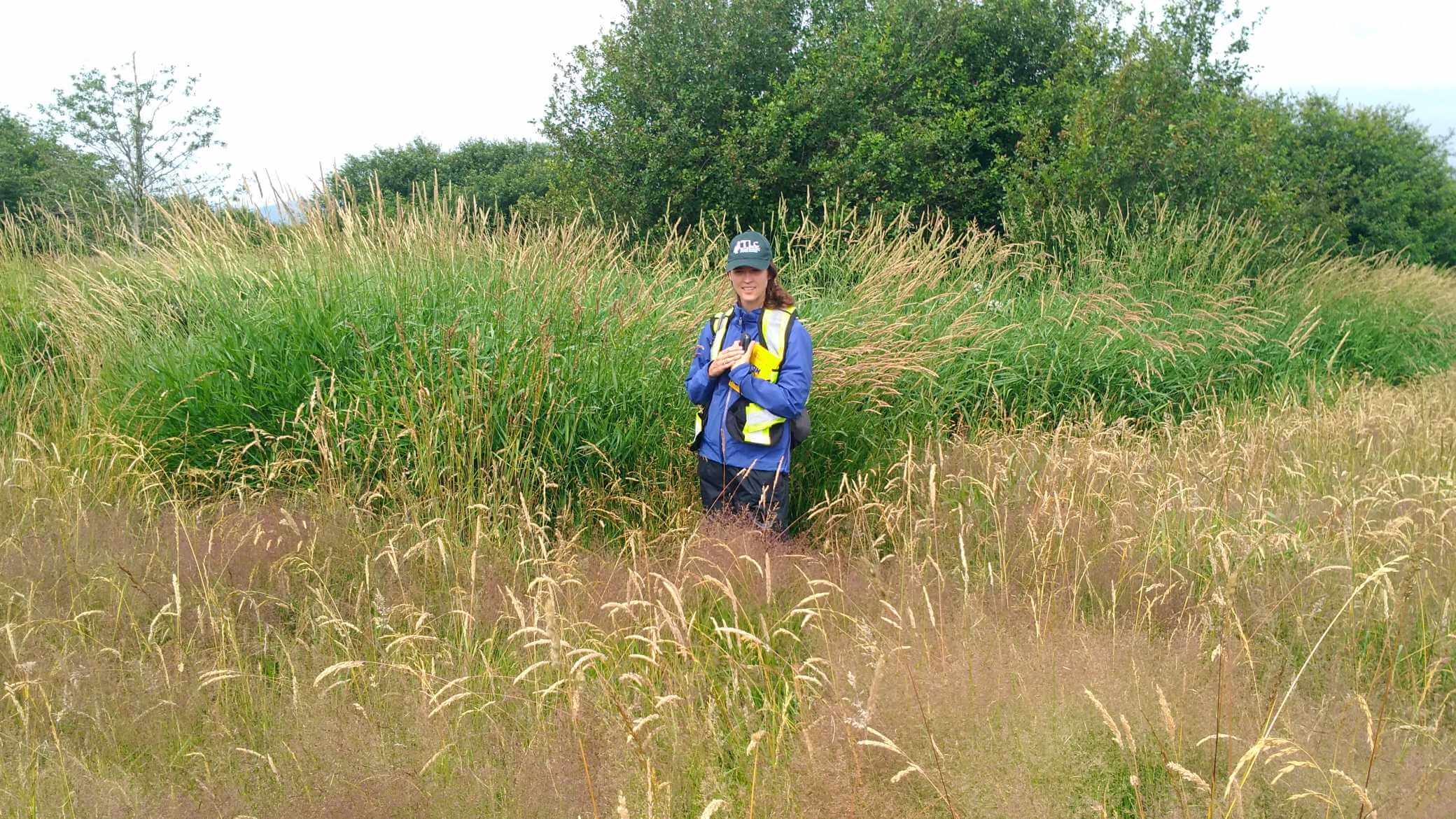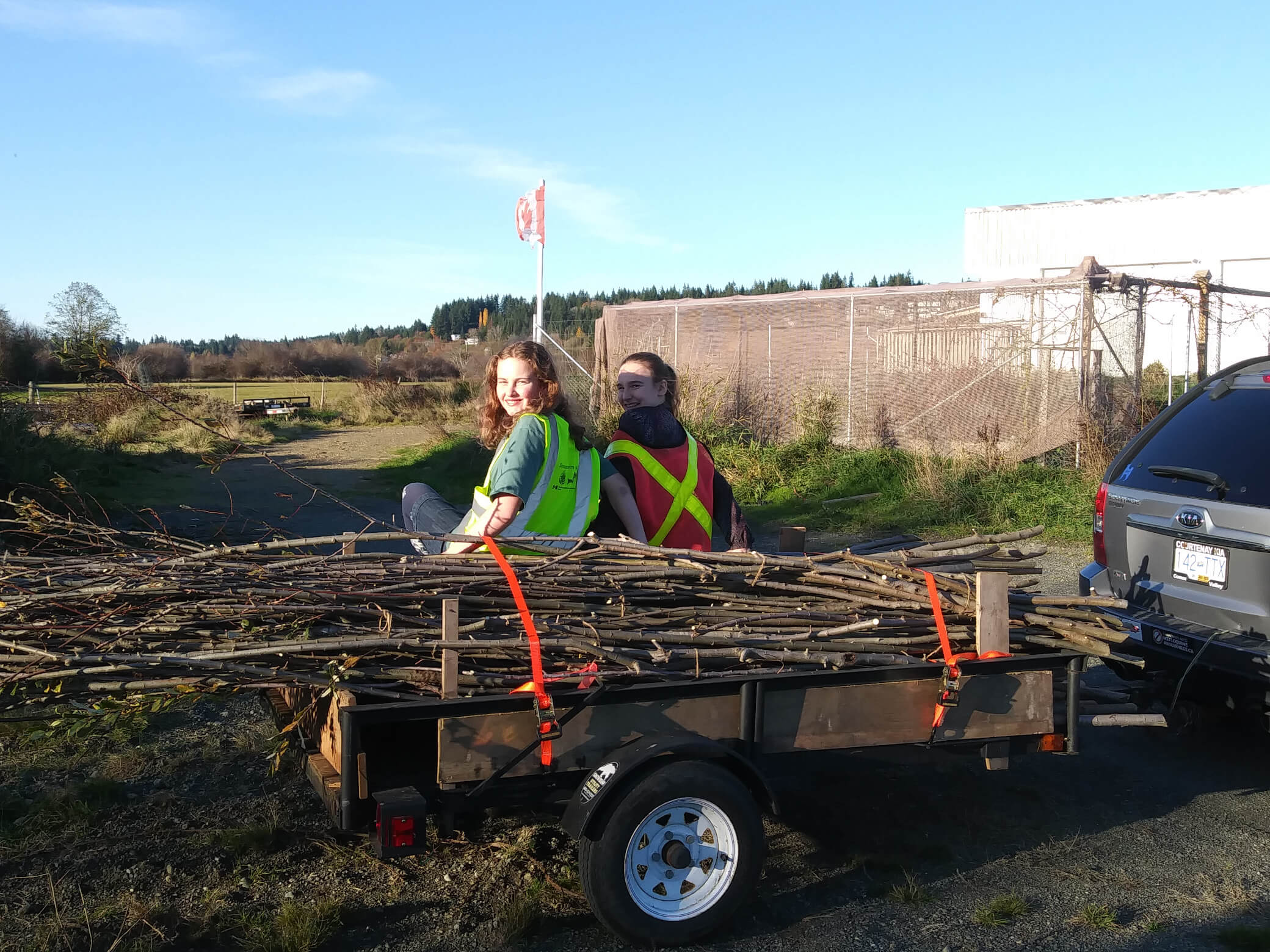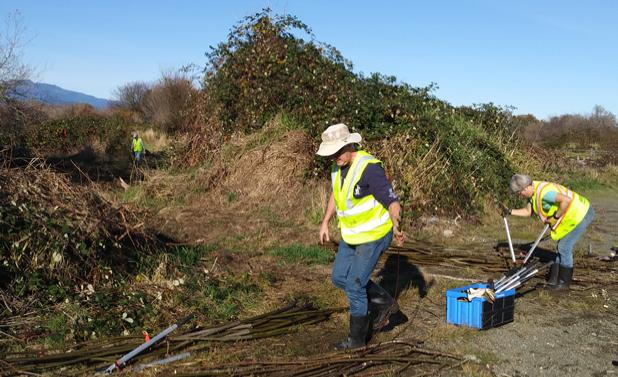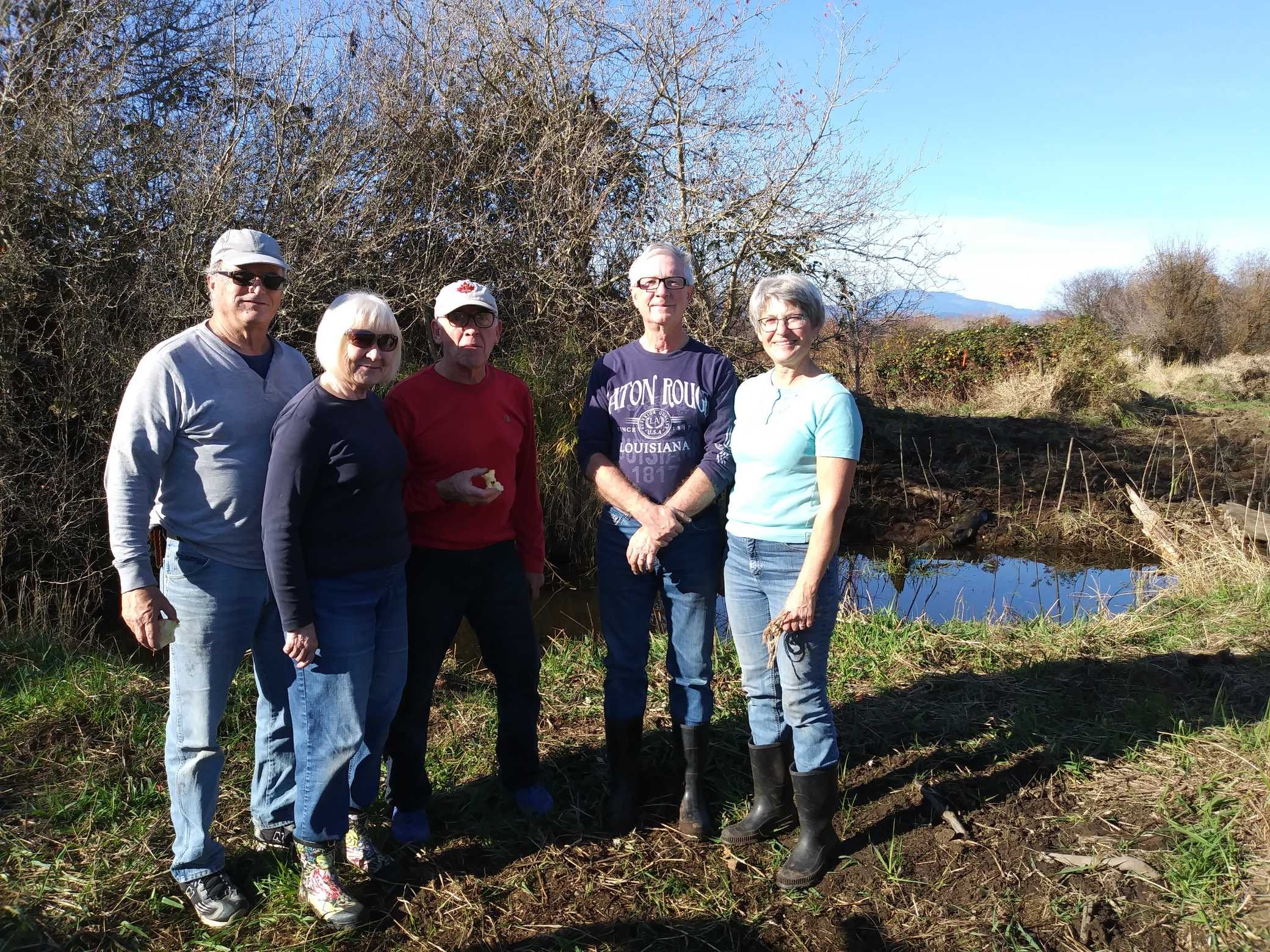Mallard Creek Reed Canary Grass Removal Project
Since 2004, it is estimated that the amount of RCG in the K’ómoks Estuary has tripled. RCG provides little value for native wildlife and insects, few species will eat it, and it grows too thickly for mammals or waterfowl to use for cover/nesting. Foraging juvenile salmon and trout have feeding opportunities reduced in areas dominated by RCG, and it constricts waterways thus preventing salmon from reaching spawning habitats.
Project Watershed, with funding support from the Fish and Wildlife Compensation Program, has been working to inventory and map the extent of invasive RCG in the K’ómoks Estuary and to come up with a management plan for this invasive species. Once we started our inventory work this past spring and summer we quickly realized that there was a significant issue with Mallard Creek (not to be confused with Millard Creek on the opposite side of the Estuary!). Mallard is a local creek that flows into the Dyke Slough and supports coho salmon and cuththroat trout. However, RCG, which can grow on land and in water up to 2 meters in depth, has completely choked off this creek in the last few years, leaving little to no open water access for fish or other wildlife.
Once we realized this was the case, Project Watershed mobilized to tackle this issue. We brought an excavator in to clear out and flip upside down the large vegetative mats of RCG alongside about 200 meters of the west side of creek this past September. Then with the help of our wonderful volunteers, we harvested long native willow stakes, cut them down to 2 meters lengths and transplanted them in the areas along the creek where the grass had been removed. The willow, which is densely planted, will regrow from these cuttings and shade out the RCG, preventing it from re-establishing. The fall is the ideal time to do this type of restoration work as the willows are dormant. With fantastic volunteer support, we managed to harvest and transplant 600 willow stakes alongside the creek at the end of October!
Volunteers, Rio North and Isadora Datt, who helped that helped harvest the willow stakes rest on the result of their labours
Related Posts
Mallard Creek Restoration Update for 2024
Restoration work in Mallard Creek will continue this year, including invasive removal, restoring connectivity, and trial planting of a new riparian species. Volunteer events starting in September 2024.
Volunteer at Kus-kus-sum Chamber of Commerce Event
We are showing Kus-kus-sum off to businesses in the Valley through a Chamber Business to Business event. We are looking for a few volunteers to assist with this event.
Coastal Plant Monitoring
Get involved with our new vegetation community science monitoring program!
Spring Field Trips
Throughout May and June Project Watershed will be taking elementary school classes out on field trips to learn about estuary and coastal ecology and to assist with planting and plant maintenance.
Working Together to Identify Forage Fish Spawning Beaches
This year marks the 5th year of a partnership between Comox Valley Project Watershed Society and North Island College on a long-term study to examine intertidal spawning habitats of forage fish in the northern Salish Sea.
Glen Urquhart Update – Spring 2024
Latest news from Glen Urquhart restoration progress for spring 2024.

